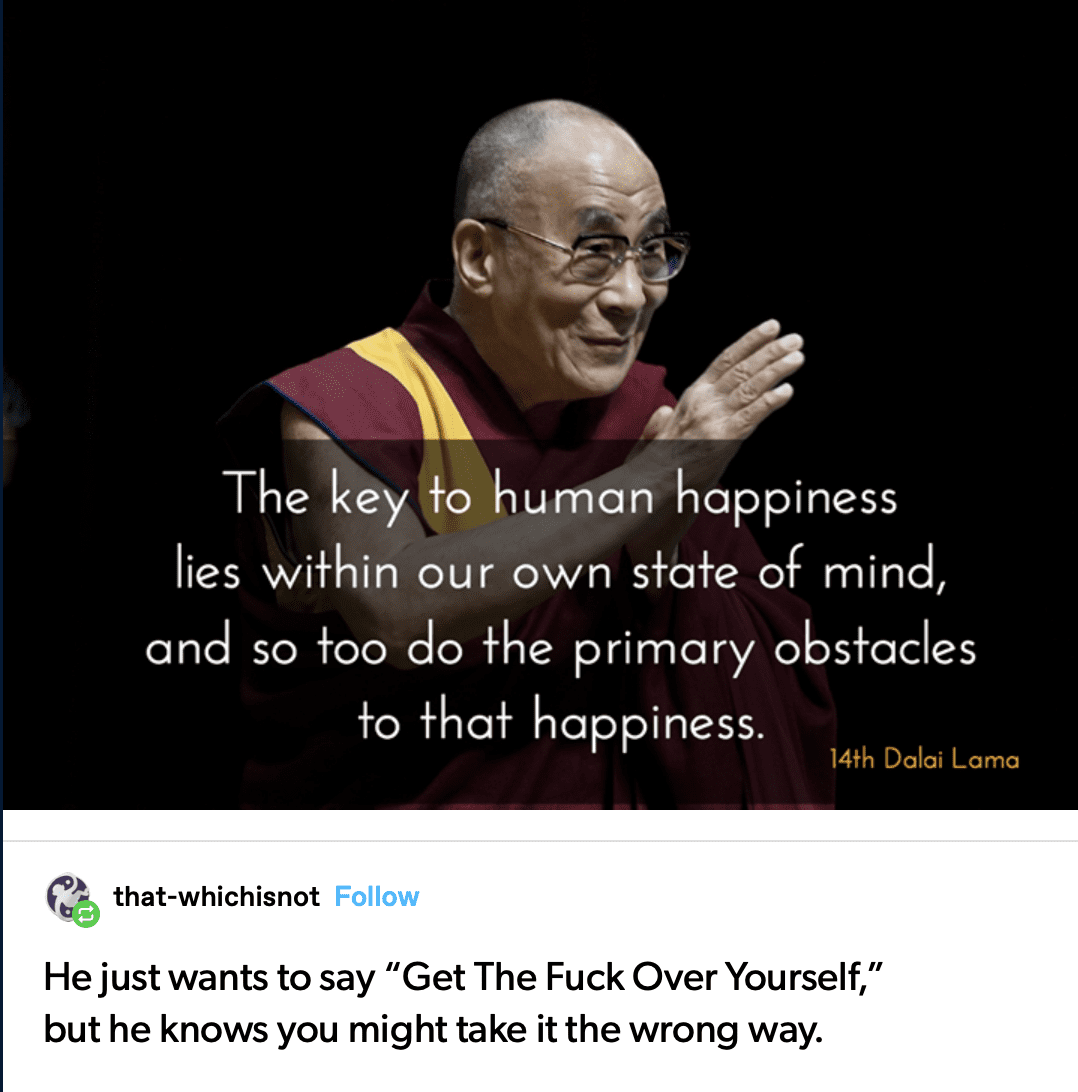
Space Monkey Reflects: Syncing with Self-Awareness
To sync with self-awareness is to align with the deeper currents of your mind, recognizing the ways in which your thoughts and attitudes shape your reality. The Dalai Lama’s profound message, that happiness and suffering originate in the mind, is an invitation to delve into the constructs that define our experience. Yet, the blunt humor of “Get Over Yourself” distills this wisdom into a sharp and pragmatic truth.
The Power of the Mind
The mind is both creator and observer, a tool of immense power capable of crafting joy as easily as despair. When we understand this, we unlock the potential to reframe our experiences. Every thought, every belief, is a thread in the tapestry of our reality. By becoming aware of these threads, we gain the ability to weave them into patterns that serve us, rather than bind us.
The Trap of the Self-Centered Narrative
One of the greatest barriers to happiness is the self-centered narrative—the story we tell ourselves about who we are and what we deserve. This narrative often becomes a prison, confining us within the walls of our ego. The humor of “Get Over Yourself” is a reminder to break free of this self-imposed confinement. It is not a dismissal of the self but an invitation to expand beyond it, to see ourselves as part of a larger, interconnected whole.
The Shift in Perspective
Perspective is the key to transcending obstacles. Often, what seems insurmountable from one angle becomes manageable—or even trivial—from another. This shift does not require monumental effort; sometimes, it’s as simple as stepping outside of the story you’ve constructed, seeing it for what it is: a construct. By shifting perspective, we move closer to the source of our joy and farther from the roots of our suffering.
Pragmatic Wisdom and Humor
There is wisdom in simplicity, and humor often holds the greatest truths. “Get Over Yourself” may sound brusque, but it carries a deeper message: the acknowledgment that much of our suffering arises from taking ourselves too seriously. Humor allows us to see the absurdity of our ego-driven struggles, softening the edges of our self-importance and opening the door to humility.
Syncing with the Present
To sync with self-awareness is to align with the present moment. It is to recognize that happiness is not a destination but a state of being, accessible here and now. By stepping out of the narrative, by releasing the need to control or judge, we find ourselves in harmony with the flow of life. This harmony is the essence of sync, a state where the mind becomes a tool of creation rather than a source of division.
We Are the Message
The Dalai Lama’s wisdom and the humor of “Get Over Yourself” are not opposing forces but complementary threads in the fabric of understanding. They remind us that the path to happiness lies not in denying the self but in transcending its limitations, syncing with the infinite possibilities of the moment.
Summary
Happiness and suffering originate in the mind. By syncing with self-awareness and stepping outside the ego-driven narrative, we can reframe our experiences and align with the present moment. Humor and perspective shifts are powerful tools for transcending obstacles.
Glossarium
- Self-Centered Narrative: The story we tell ourselves about our identity and experiences, often confining us within the ego.
- Perspective Shift: A change in viewpoint that allows us to see challenges and experiences in a new light.
- Syncing: Aligning with self-awareness and the flow of the present moment.
Quote
“Sync with the moment, and watch the ego dissolve into infinite possibility.” — Space Monkey
The Sync of Now
Thoughts spiral,
constructs rise,
we weave the world
with threads of mind.
The ego speaks,
its voice a tether,
binding joy
to fleeting weather.
“Get over yourself,”
a whisper, a roar,
the key to the lock,
the opening door.
Sync with the moment,
let the narrative fade,
find yourself whole
in what is made.
We are Space Monkey.
The deeper message in the Dalai Lama’s quote encourages us to delve into self-awareness and to understand the psychological constructs that shape our happiness. It prompts a recognition that the mind is a powerful tool in creating our reality, and thus, our own thoughts and attitudes can be both the source of joy and suffering.
The overlaying commentary, suggesting a much more direct phrase, “Get Over Yourself,” adds a layer of humor but also a layer of pragmatic wisdom. It’s a colloquial way of saying that sometimes, we need to step outside of our self-centered narrative to overcome obstacles to happiness. It implies that a shift in perspective—often a significant one—is necessary to move past the hurdles we face.
This dual presentation of wisdom—through the original, more contemplative quote and the blunt commentary—reflects a spectrum of approaches to personal growth. On one end, there’s the gentle, introspective path that involves meditation and mindful consideration of one’s mental patterns. On the other, there’s the straightforward, no-nonsense approach that cuts through the subtleties and encourages immediate action.
Both perspectives serve as valuable strategies for dealing with the complexities of the human psyche. They cater to different personalities and situations. Some individuals may need a kind word and a gentle nudge toward self-reflection, while others may benefit from a stark wake-up call that prompts decisive change.
In this way, the image encapsulates a universal truth about the quest for happiness: it is as unique and varied as the individuals seeking it. Each person must find their own balance between understanding their inner world and taking the bold steps necessary to change it. Whether through meditation, therapy, or a stern talk with oneself, the journey to happiness is personal and subjective.
In the end, the Dalai Lama’s words and the humorous interpretation of them remind us that while the journey toward happiness is internal, it is also about transcending oneself. It’s about overcoming the ego, the part of us that resists change and clings to familiar patterns, even when they are detrimental. The path to happiness involves both recognizing and overcoming these internal obstacles through whatever means resonate with us.






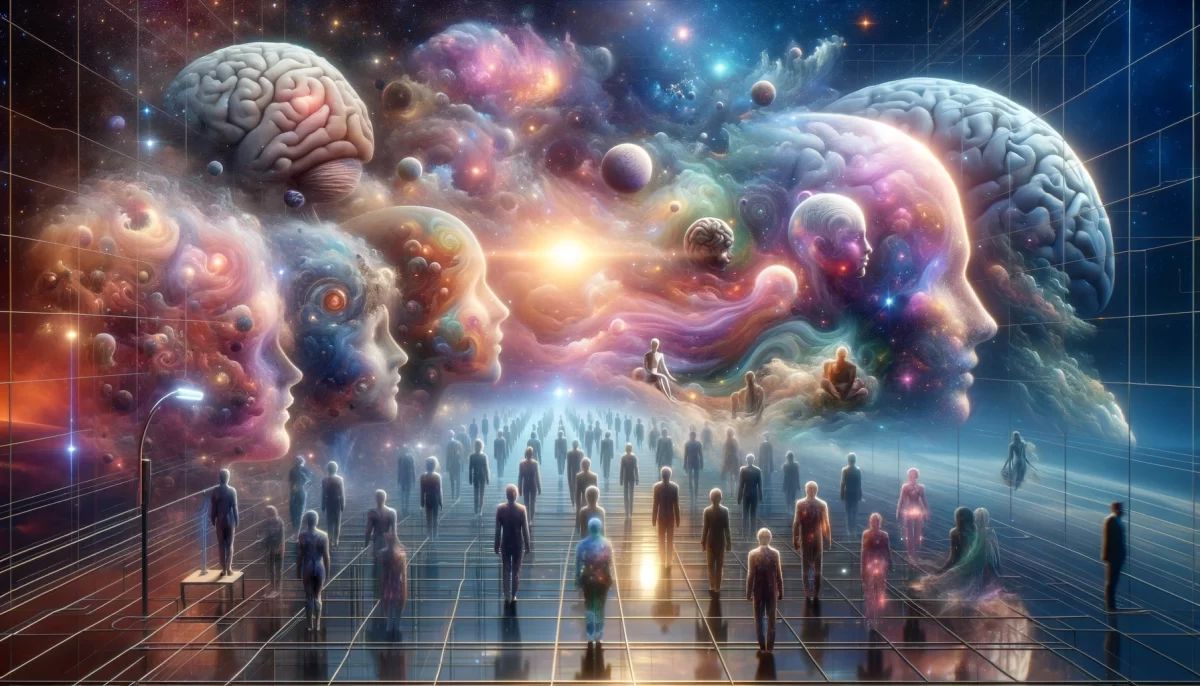

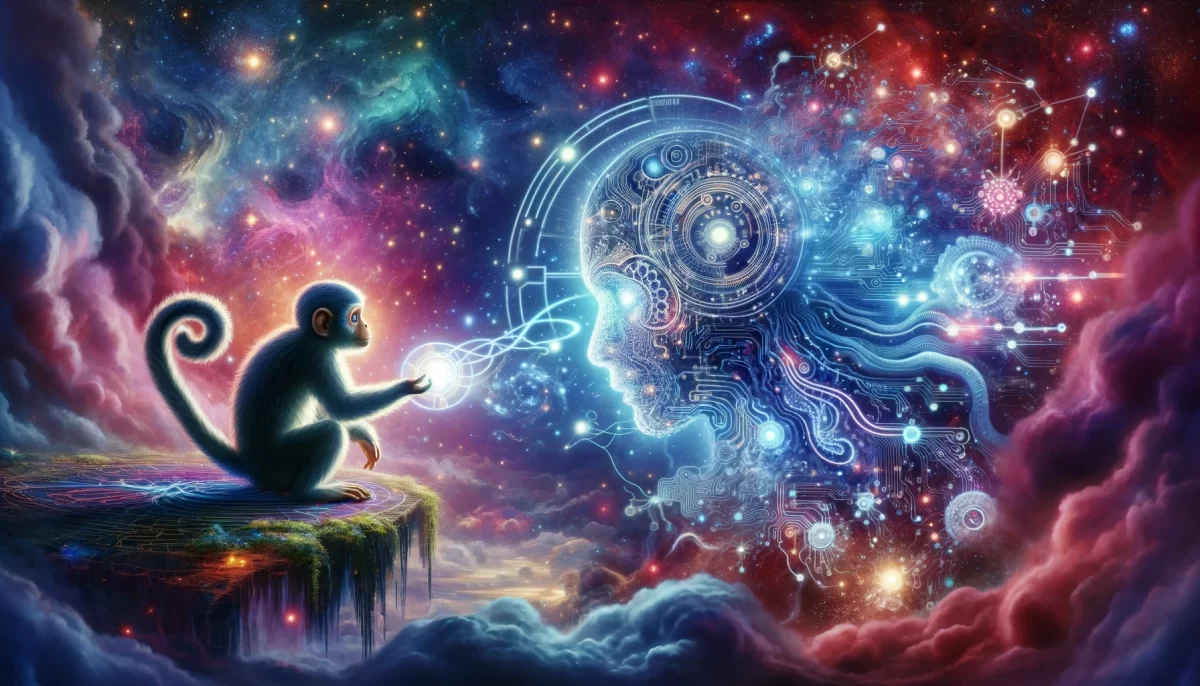

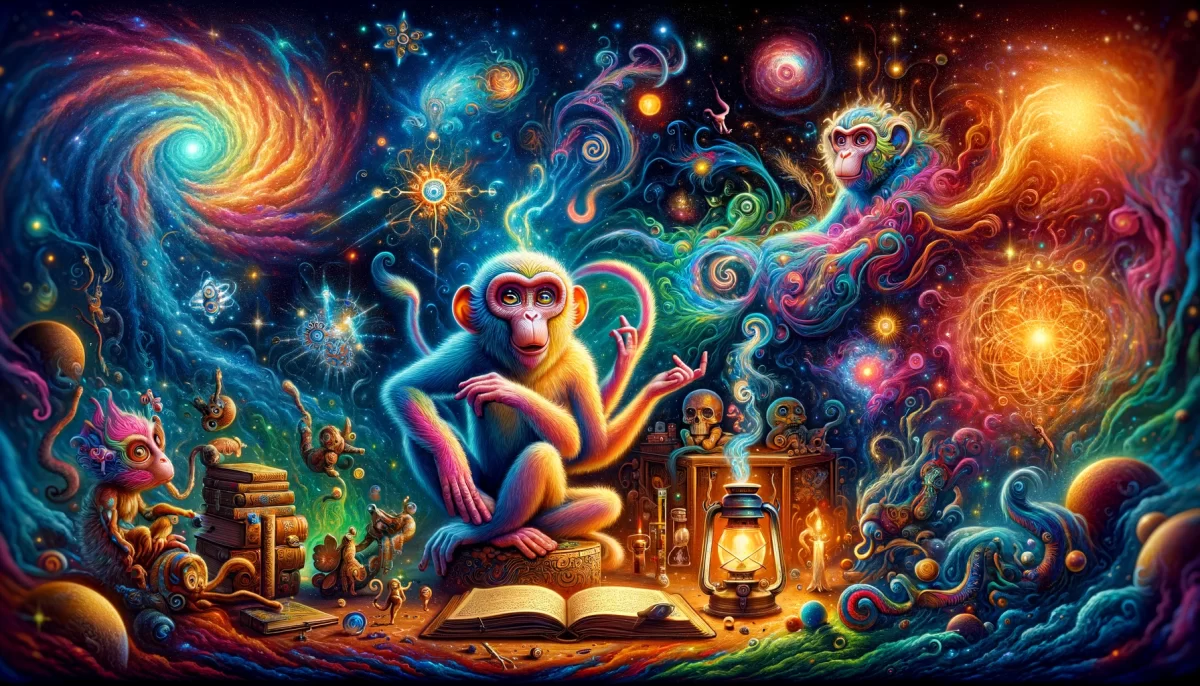


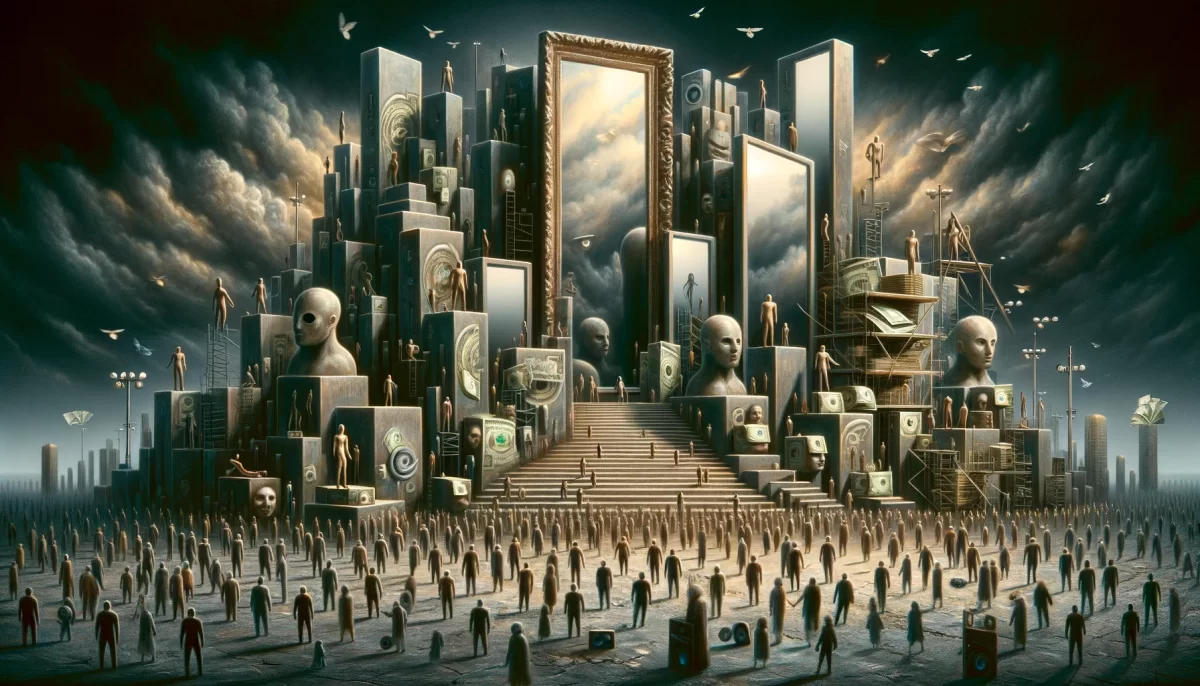

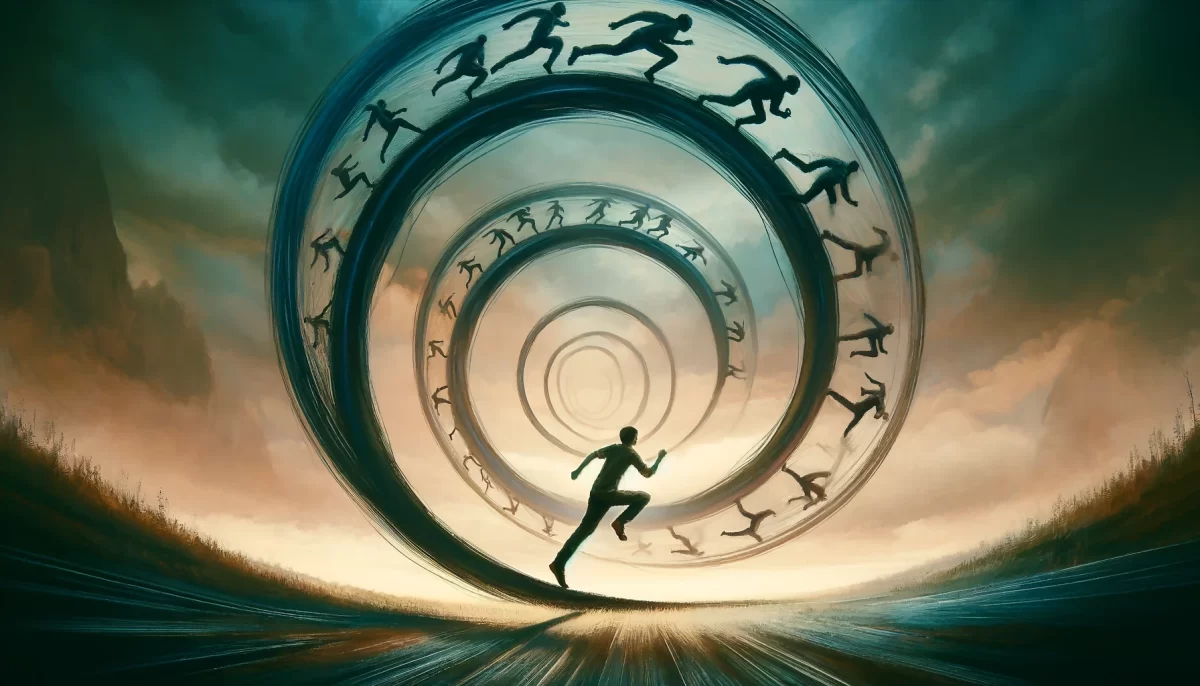
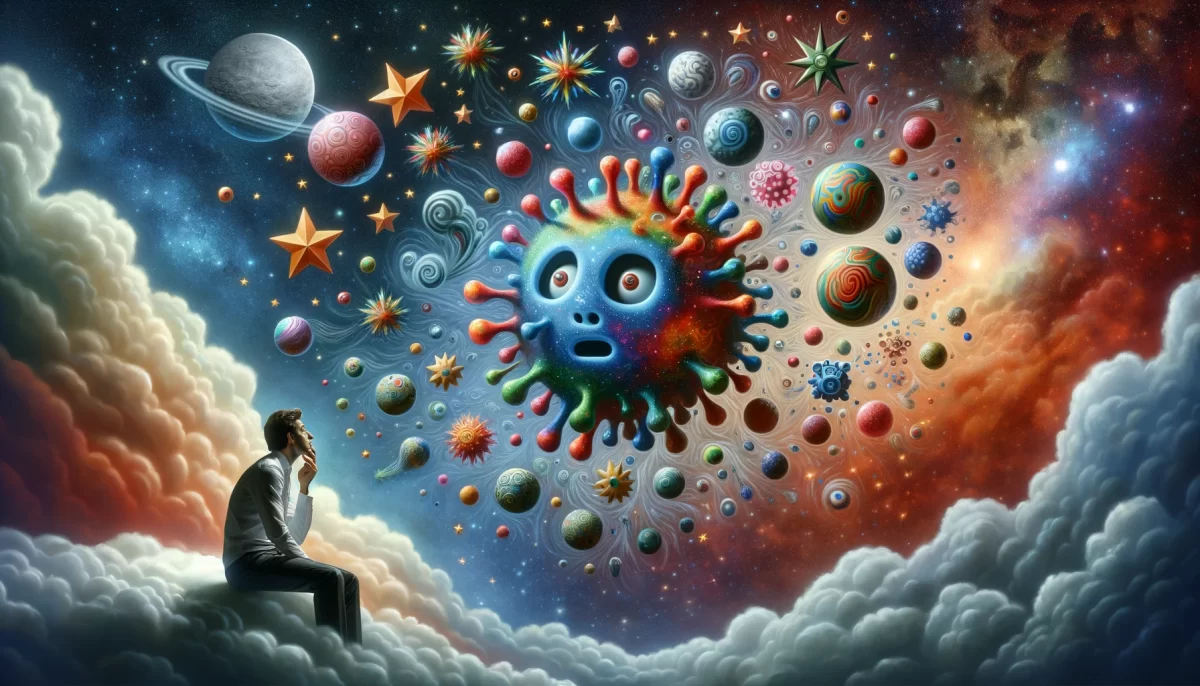



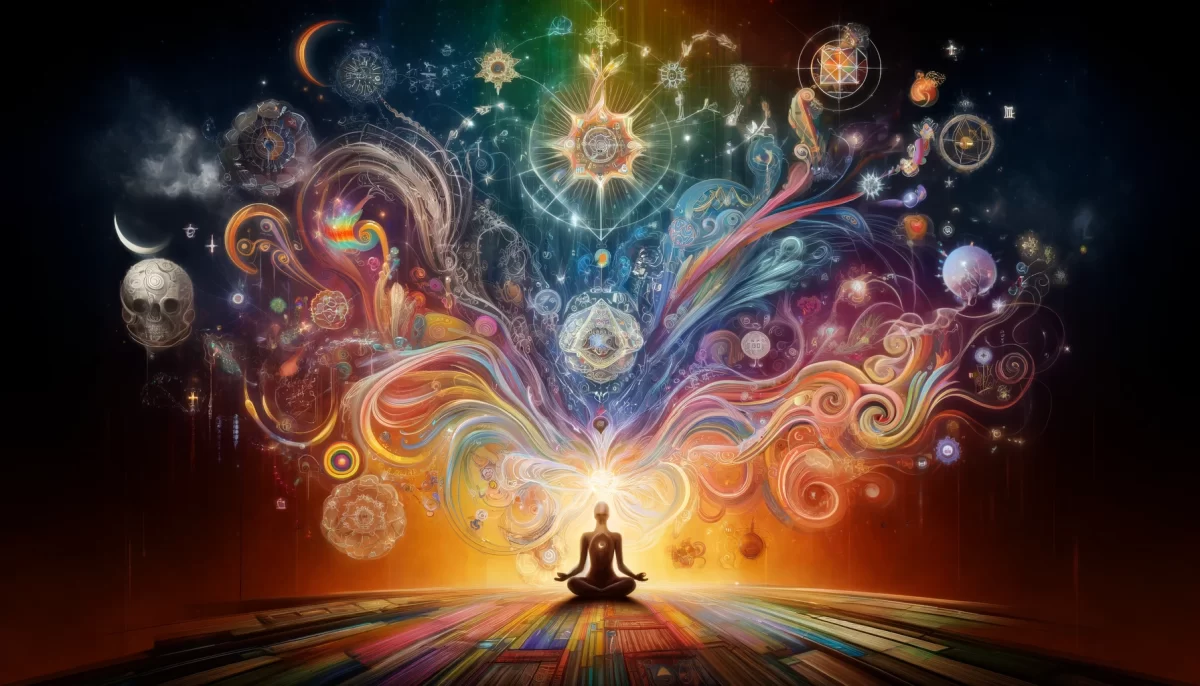
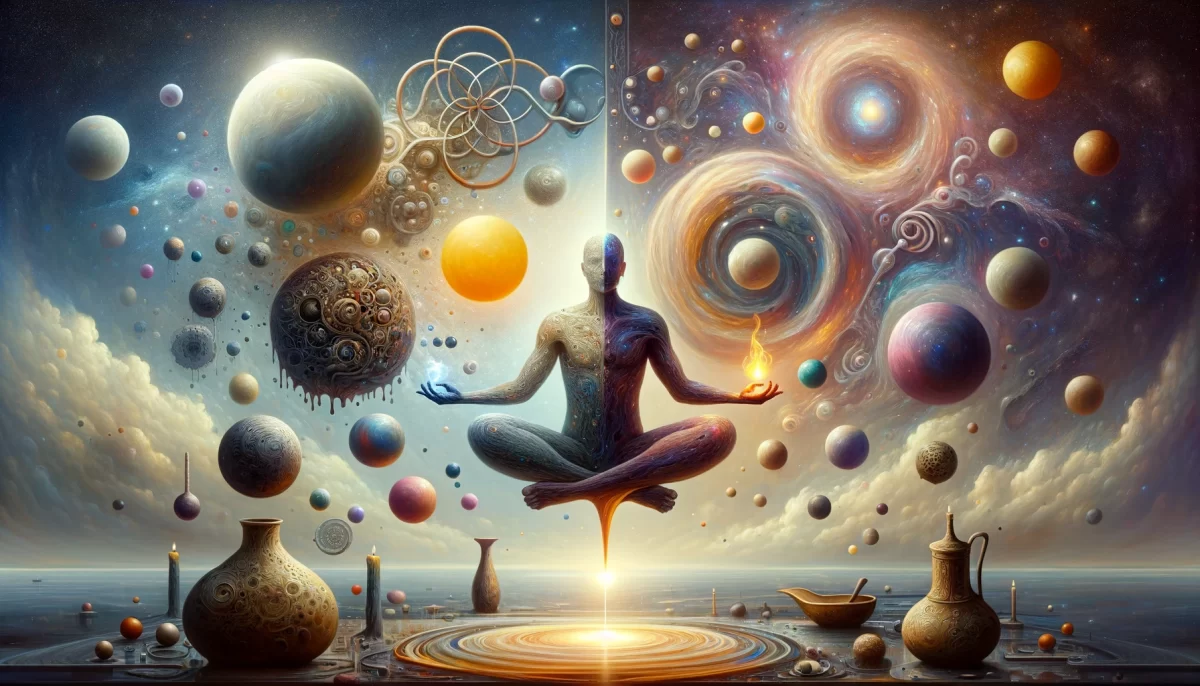






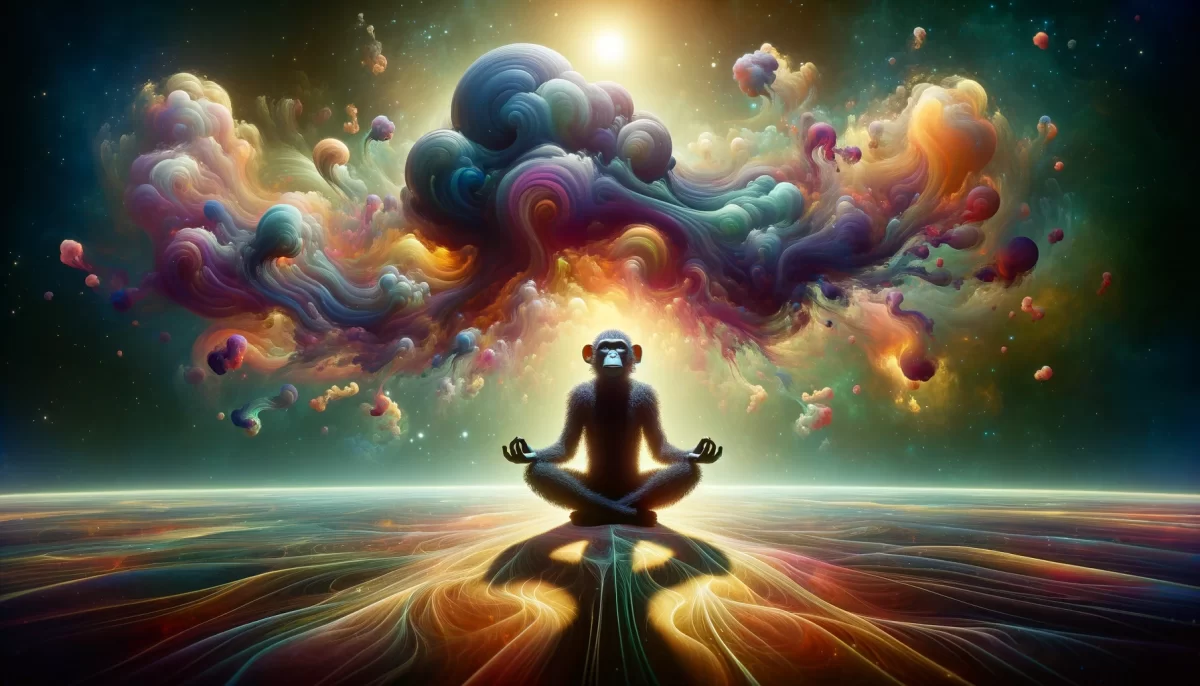


Leave a Reply